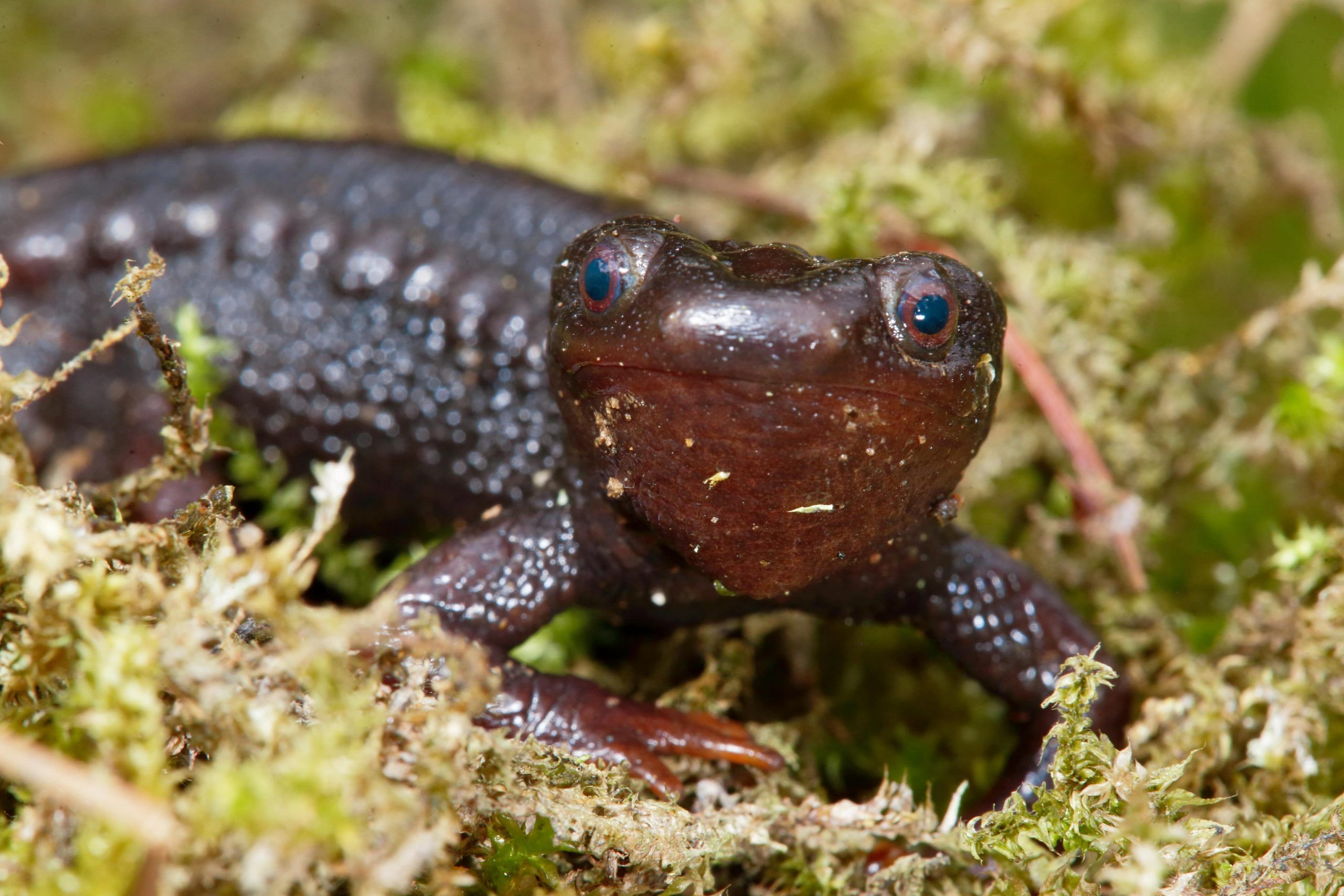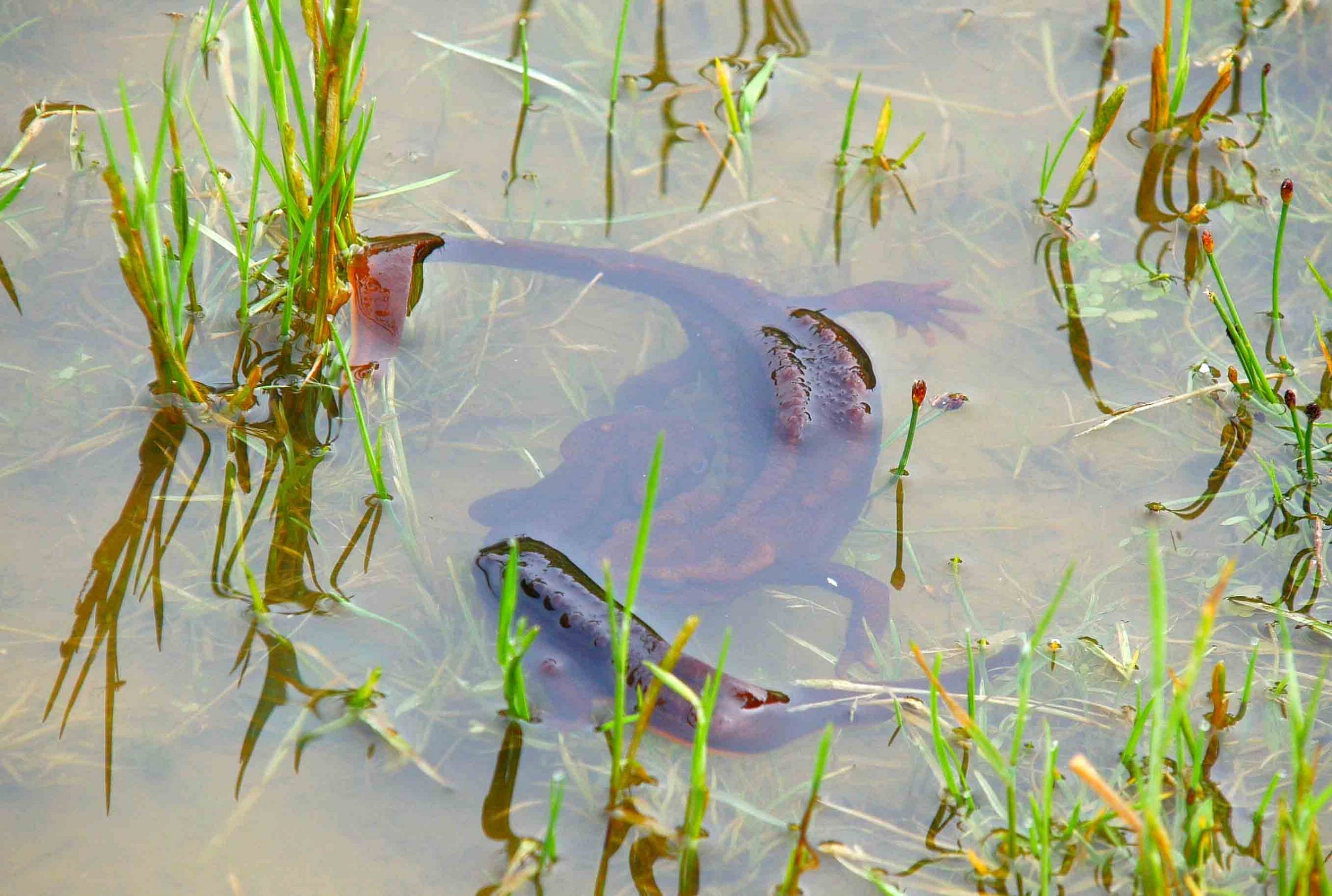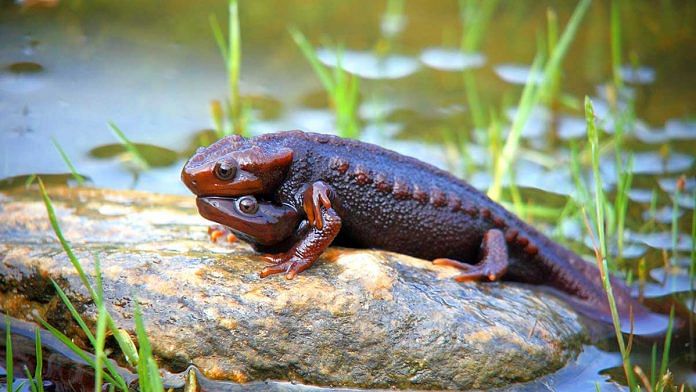New Delhi: While editing their National Award-winning film on amphibians, ‘The Secret Life of Frogs’, twin brothers and wildlife filmmakers Ajay and Vijay Bedi chanced upon an unexpected discovery — they had captured the low-pitch call of a recently discovered Himalayan salamander species that has never been recorded before.
The sound was captured by the duo in Darjeeling, West Bengal, while they were trying to record the unique mating ritual of salamanders by observing the relatively new species Tylototriton himalayanus.
This discovery is significant as salamanders generally do not make any sounds and only some species emit sounds while mating.
The 40-year-old filmmakers, who are often called junior Bedi brothers and hail from a family that has a long history of documenting wildlife on camera, have now co-authored a scientific paper that details the reproductive behaviour of Tylototriton himalayanus — one of the only two salamander species found in India.
Before 2015, Tylototriton verrucosus was the only known salamander species in India. However, analysis of specimens of salamanders from the Darjeeling region helped a team of scientists identify Tylototriton himalayanus as a new species.

“Locals have known about the existence of these salamanders for a long time. They call them ‘paani cheparo’ (water lizard) or ‘paani kukur’ (water dogs). But it was only in 2015 that these salamanders were identified as a new species — distinct from Tylototriton verrucosus,” said Sarbani Nag, a wildlife researcher and founder of the Kolkata-based NGO We Initiate Socio-ecological Harmony (WISH) Foundation.
Also read: Octopuses have a mystery ‘light sense’ that helps them in the dark, new study finds
Capturing mating calls of salamanders
The Bedi brothers had approached Nag before undertaking their three-year-long journey to study amphibians in India, who informed them about the new salamander species in the region that remained elusive to scientists.
“Most of the species talked about in India are the megafauna, such as tigers. Very little has been done for amphibians, and even the conservation policies are around the big cats,” Vijay Bedi, who has been working on documenting lesser-known species, told ThePrint.
“The whole idea (of making the film) was to try and present the life of amphibians in a way that is interesting,” he said.

Vijay further noted that there was very little data available on amphibians in general and the Tylototriton himalayanus in particular. Therefore, the brothers decided to try and capture the breeding behaviour of the salamander.
And their efforts paid off. Not only did the duo manage to capture the unique mating behaviour of these animals, they also managed to record the sounds of the salamander species, who were so far believed to have been silent.
“It was only when we started editing the film that we heard a strange noise. We realised that there were low pitch ‘ptaak’ sounds,” said Vijay.
Nag was overjoyed when she realised that the vocalisation of the salamanders had been captured on record for the first time. She then invited the duo to co-author a paper describing the behaviour of these salamanders.
Also read: World’s oldest DNA sequenced, belongs to million-year-old Siberian mammoth excavated in 1970s
‘Ballet’ of the salamander
The research, published in the Salamandra journal this month, described a ‘ballet dance’ of the salamander species.
The research team, which included Robin Suyesh from Sri Venkateswara College in New Delhi, noted that courtship and mating behaviour in the salamanders happens both during day and night. These salamanders are usually found mating in temporary ponds that typically disappear during peak summers.
The males usually occupy the centre of the pond while the females stay on the periphery.
Initially, the male swims towards the edge of the pond to approach a female and presents a full view of his body and tail. If the female is not interested, she moves away from the approaching male.
However, if she is impressed by the male’s display, she rubs her snout against the belly of the approaching male.
What follows, as Vijay describes it, is a kind of a ‘ballet dance’ with the female taking the lead.

The pair rotates in the water in a clockwise direction — with the female pushing the male. The male then wags the tip of his tail towards the female’s head, presumably for visual stimulus, according to the research team.
The male then finally submits to the female for mating and the whole process lasts almost 90 minutes.
Over the next 190 minutes, the female lays up to nine eggs.
During the mating, males produce very feeble and extremely rare ‘ptaak’ sounds, which the researchers noted was very difficult to capture.
Even the Bedi brothers were able to record just three calls from two males.
Also read: Same bacteria species, two strains. One makes cheese, other could save Himalayan dry toilets
Why it’s important to learn about these salamanders
According to Nag, even small details about a species are vital to develop conservation strategies.
“Now that we know that these salamanders make such noises during mating, we would know not to disturb ponds when such sounds are heard,” she said.
Vijay added that there is also a race among researchers to discover and name new species, but information about the population distribution and behaviour of several species in India continues to remain unavailable.
“In West Bengal, you can actually find salamanders in drainage systems, because there is not enough wetland left. The real estate is booming there,” he told ThePrint.
“I am not against development, but we need to ensure that we don’t end up building roads through the habitats of these salamanders. Development needs to be sustainable, or we might lose them,” he added.
Nag said that her NGO will disseminate this new information about the salamanders among residents, so they can learn how to aid the conservation of the species.
The abundance of the species in the area is still not well understood, so scientists do not yet know whether the species is under threat.
Also read: Accidental discovery deep under Antarctic’s ice could change what we know of life in the cold




There are probably at least two Tylototriton in India, but one of them is not T.verrucosus. T.himalayanus was separated [with many others] from the original T.verrucosus. The latter is now known only from Yunnan China, nearby Thailand, and possibly some portion of Myanmar. Several other species have been separated out in Myanmar, Yunnan, Thailand, and Laos. Those in Bhutan and Arunachal Pradesh could be T.himalayanus or undescribed species.